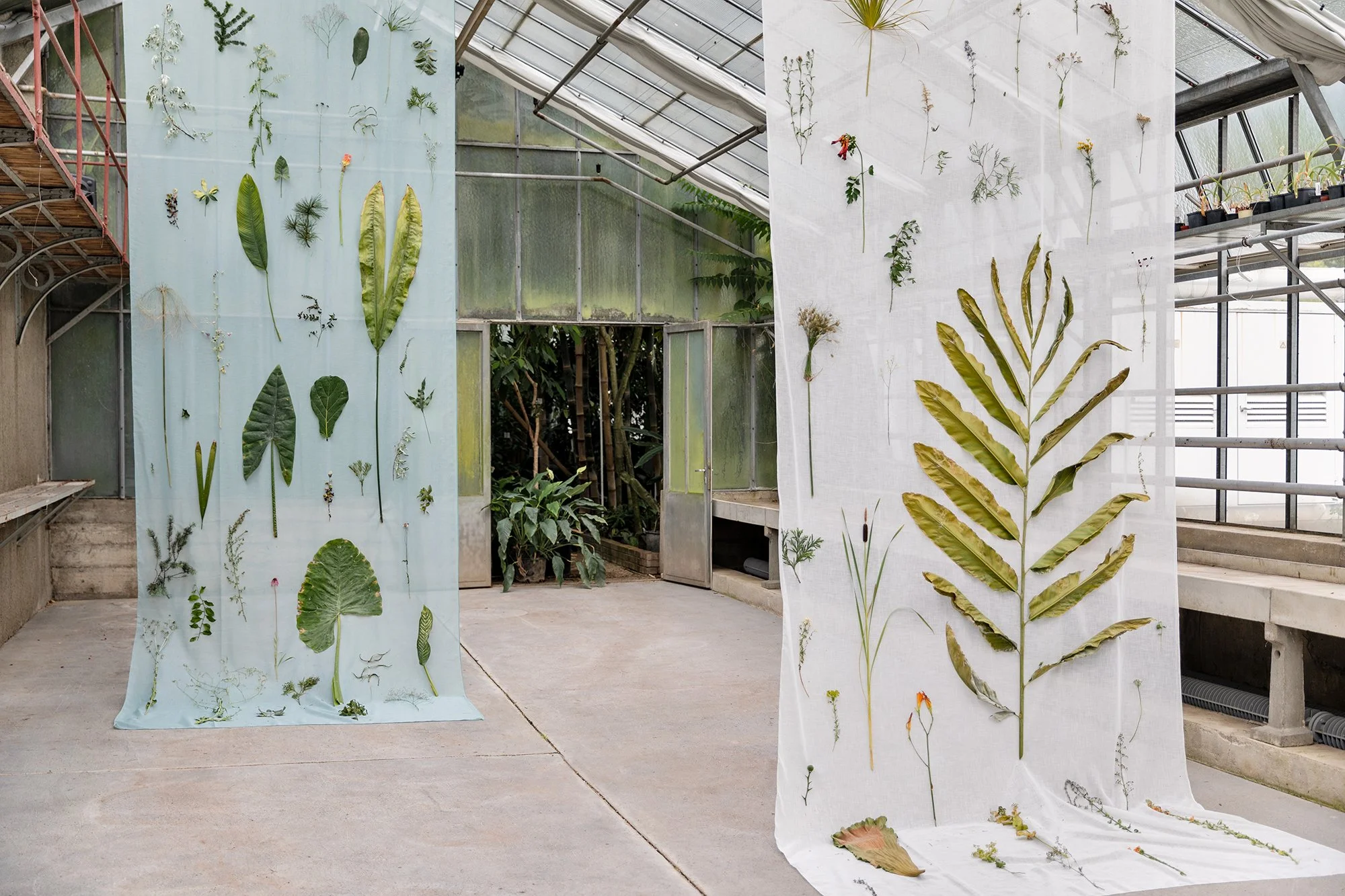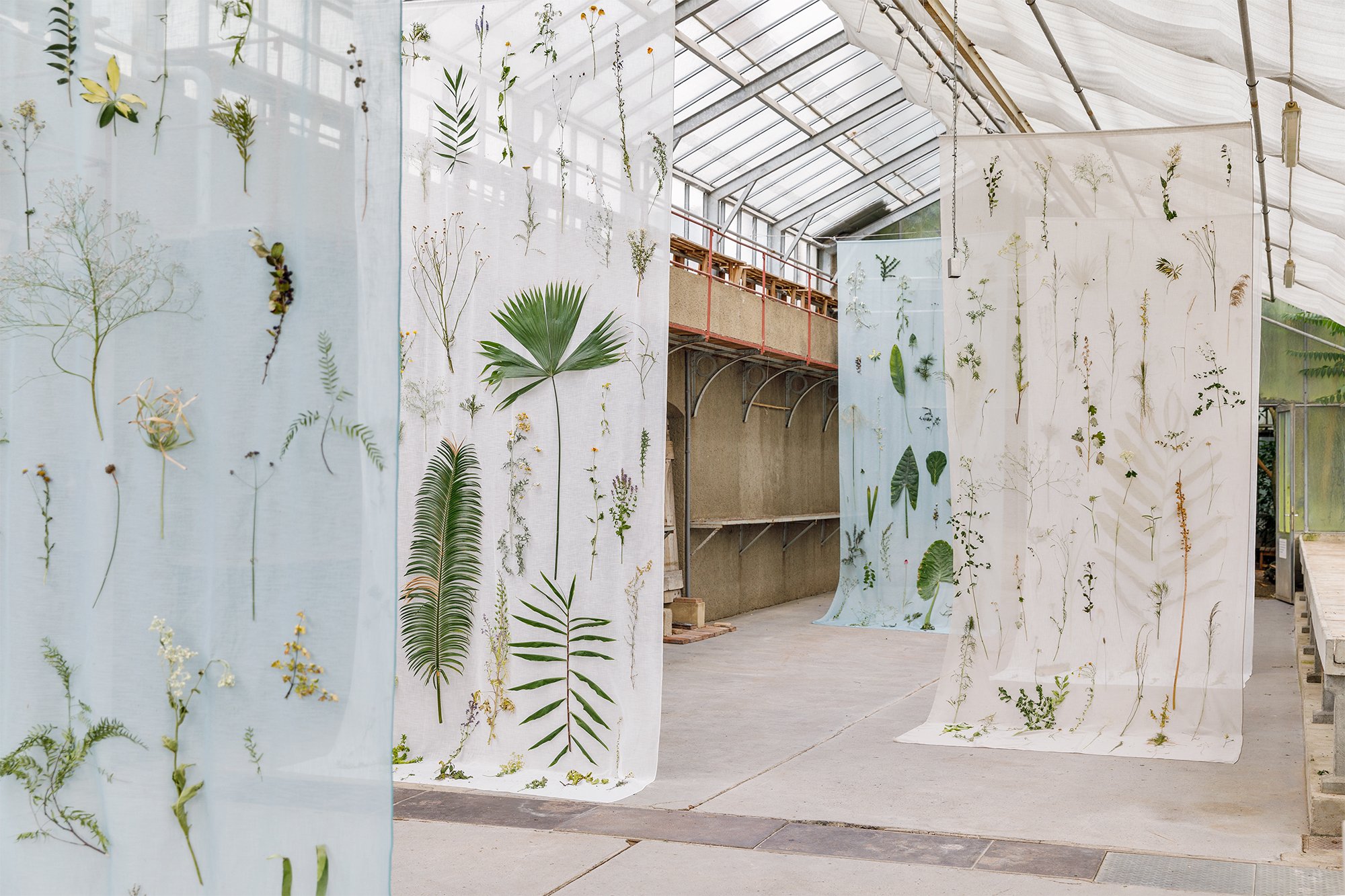Luke Myers work is about rebuilding empathetic connections with the natural world, in response to the disasters of anthropocentrism. He spends time in forests, with insects, trees, and plants, learning about and from them in a sensory way, not an empirical one, and translates those experiences into sculpture, video, and socially motivated action. With this process, attending to the often unseen but equally important members of the ecosystem, he seeks to question hierarchies and capitalist, human exceptionalist paradigms that currently define the Gaia/Anthropos relationship. Telling forest stories to people, and sharing our stories with the forest, he proposes new valuations and positions for both species. We’ll hear from the artist below, explaining the elements of his artwork Credit Scene:
Roll Credits
This work, Credit Scene (After the End of the World), is about the attempts and failures of technology to recreate nature. Or, not-quite-failures, because the results are compelling even as they trend toward obscurity. It explores the contradictions of natural and artificial, and what happens when they mimic each other, the beauty in the uncanny. It’s also about the kind of weird intrusions or incursions that technology makes, the way it seems out of place but also welcome. There is a dissonance between artificial and organic materials, forms, and sounds, and I’m interested in how both sides work to reconcile that. Someone sets their ringtone to a birdsong. A bird learns to sing like a car alarm. Which is the better technical reproduction? Which do you want to hear? Can I find ways to attune that dissonance to a harmony?
Responsibility
Sometimes I don’t pick up litter or plastic when I come across it in the woods. I just take a picture and leave it. I’m just less and less sure about how useful I can be as an individual. If you remember the “crying Indian” TV ad, about littering and personal responsibility, that ad was created by corporations who were facing increased regulations over the amount of trash their products were generating. Instead of changing it they shifted the blame to consumers. But whose trash is it?
Trouble
I don’t mean I can just ignore the trash. I live here too. And I don’t mean I’m “giving up” or that the future is hopeless, I’m just shifting focus to the present. I think about Donna Haraway’s idea of “Staying With the Trouble” a lot. She talks about how as motivations, hope and despair are both useless, since immediate action doesn’t require either, it precludes both. She also has a lot of ideas about human-animal entanglements and how our relationships can benefit multiple species. She talks about racing pigeons being used for meteorological data gathering. You could say “why do we force birds to wear backpacks” but she doesn’t pass judgement, just looks at the problem and says – isn’t this interesting? Timothy Morton (in Hyperobjects) says there are no good solutions, or every choice we make is wrong. But that means we are free from choice-paralysis and so we can just get on with it. Haraway would say get on with “Living and dying well”. That is meant to be an inclusive statement, as she writes about humans and other-than-humans together.
Fade to Black
In previous works, I was trying to imagine something different, even absurd. In Credit Scene, I’m not trying to be positive or negative – not that I think it’s necessarily neutral – but I want people to see the good and the bad together. The original idea for the piece, aesthetically, was basically a river of green, framed by sleek black. I wanted these beautiful colours and shapes that are like an archive or layers of memory, just streaming out of a robotic, futuristic apparatus… beautiful, and sad at the same time. And of course as the layers add up the imagery gets more and more obscured, the greens and blues shift darker toward black. So, it is a warning in that sense, a wolf howl at night.
G-D Algorithm
You might notice the form feels vaguely organic. Yes it is! It’s actually a shape generated by an AI, or more specifically, a generative design algorithm. Rather than modelling the entire thing, I gave the computer certain parameters - where I need to attach something, or where it should be fixed to the floor, the loads and vectors it needs to handle. Then I input the materials I want to use, their structural properties, and the method of manufacturing, which could be flat (for 3 axis CNC) or additive, for 3d printing. The computer analyses that information, creates a model of the forces involved, and optimises the shape for strength-to-weight, so that the part will be as light and rigid as possible given the design constraints. It iterates on that process hundreds of times until it reaches convergence. The interesting thing is that the process creates really organic looking shapes. It’s actually inevitable, if the algorithm is working right. What is a bone? A series of parametric inputs, iterated on until it’s optimised for strength-to-weight. A tree branch is the same. The algorithm is a technology that imitates nature, to varying degrees of success.
Carbon Fiber
The first thing you see looking at Credit Scene is all the carbon-fiber. I used carbon fiber because of its associations with futuristic technology, spaceships, etc. It’s a materials science development that’s accessible and it conjures the idea of “the newest”. In spirit it’s basically the opposite of wood, maybe the oldest building material we have (and still the best for many applications). There’s also a lot of waste that goes along with it. It’s a contradiction in the work (using environmentally unfriendly materials) but I think there are no “right choices” inside (what Timothy Morton calls) hyperobjects, like climate change and eco-disasters. I think it’s important to recognise but I don’t let it paralyse the process. I did use bio-resins and recycled materials whenever possible, but the environmental impact of these new materials is severe, and that goes along with the other tech resources we all use like lithium for the batteries in our cell phones and everything else, and even the energy for the internet, or bitcoin, or the night sky getting cluttered with Starlink satellites. I think it reinforces the idea of tragedy and loss co-existing with beauty in the work.
River of Green
There is an argument in Credit Scene about image reproduction – specifically how oversaturation of imagery creates obfuscation. But that doesn’t mean we stop trying. How many landscapes were painted by American luminists? Are the subsequent efforts of photographers any more successful? Have you ever felt like you were outside when you looked at a picture of a tree? In a previous work I tried to recreate the experience of a nature walk, surrounding the viewer with video projections, but it was most interesting in how it completely failed its premise. In Credit Scene I’m trying again, this time with a printer. I use image sets of local trees, all from one location, so the print becomes like a portrait of a place. But the more it tries, the more it fails to deliver the experience of being there. The image stream starts out green but because of how pigments work it eventually turns darker and darker. And of course, the tree-recreation is an echo of the g-d algorithm you can see in the support structure.
Waterfalls
There is one more vignette I keep thinking about. In a National Geographic short video, where they’re documenting the effects of land reclamation in Southeast Asia, you see a fisherwoman from a Cambodian village, whose livelihood and local ecosystems have been destroyed because of sand dredging. They are taking the sand from the rural coasts and using it to build more land in Singapore. The National Geographic team brings her to Singapore and she visits the botanical gardens where the world’s largest indoor waterfall has been built on top of her sand. It’s enclosed in a massive glass dome, and all planted with a collection of rare orchids from the Malaysian jungles. As she’s walking underneath this huge constructed landscape she says “If this was real, imagine how beautiful it would be!” That reaction, that bittersweet mix of wonder and loss, that’s it! That’s everything.













